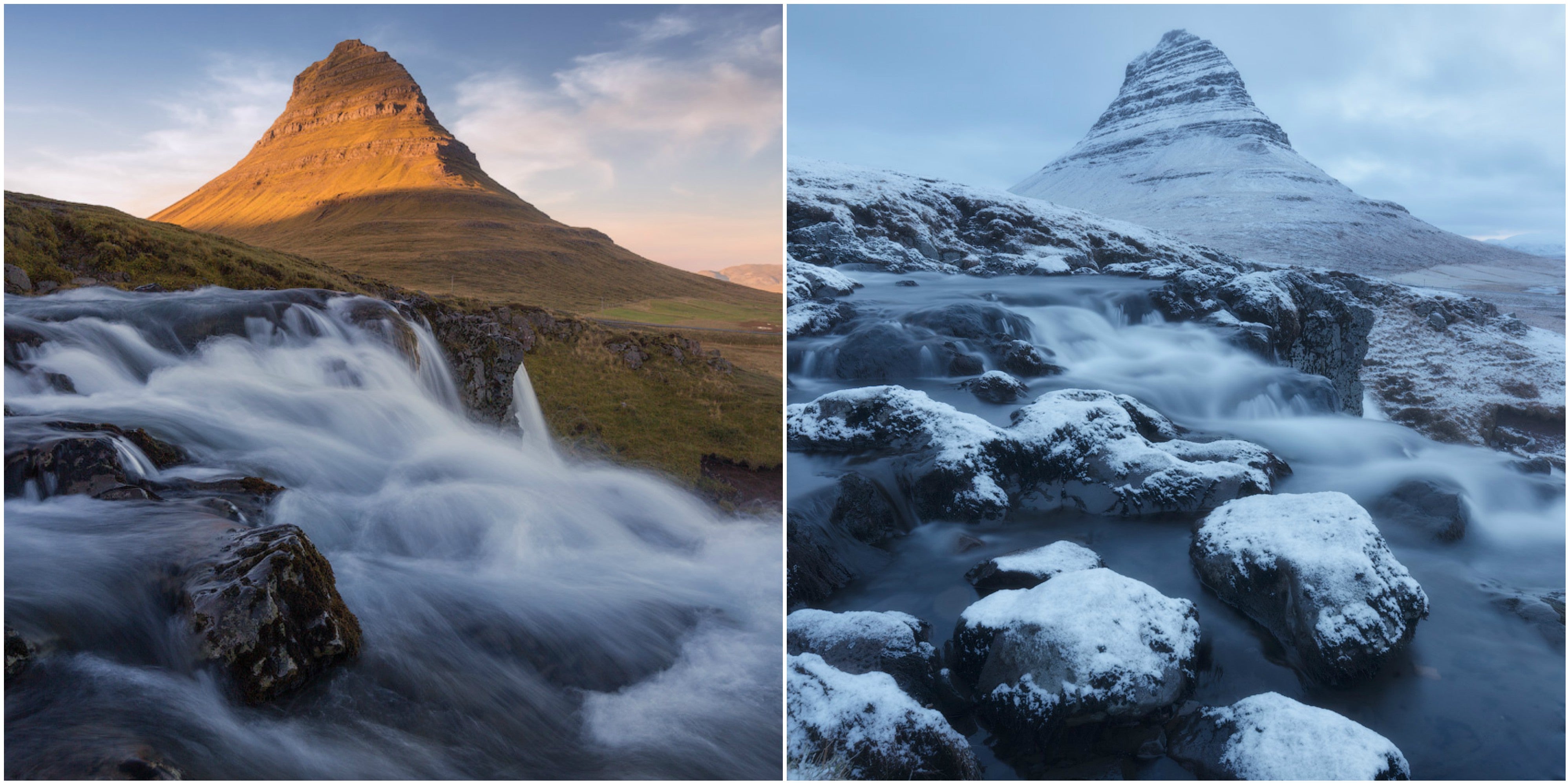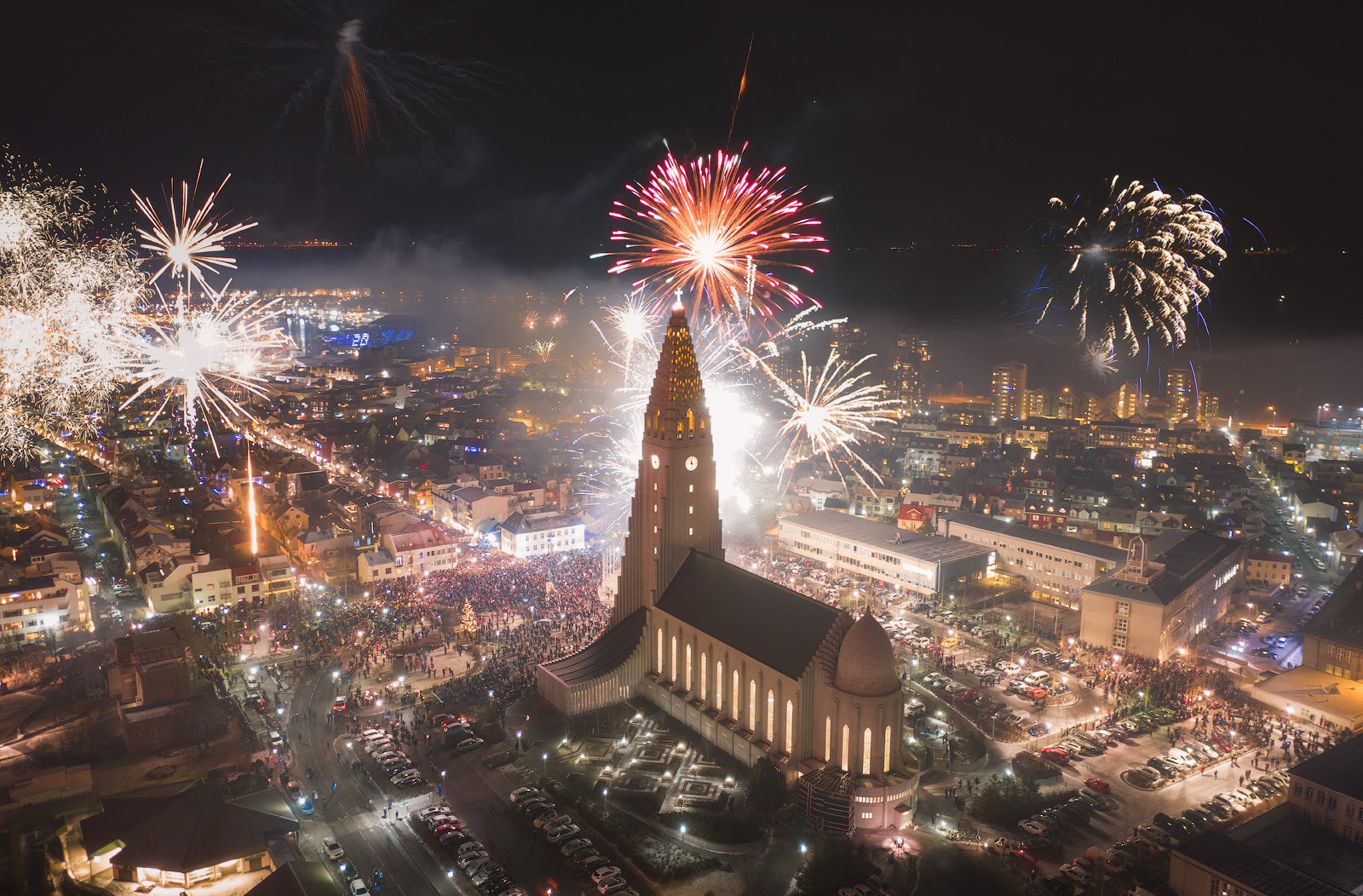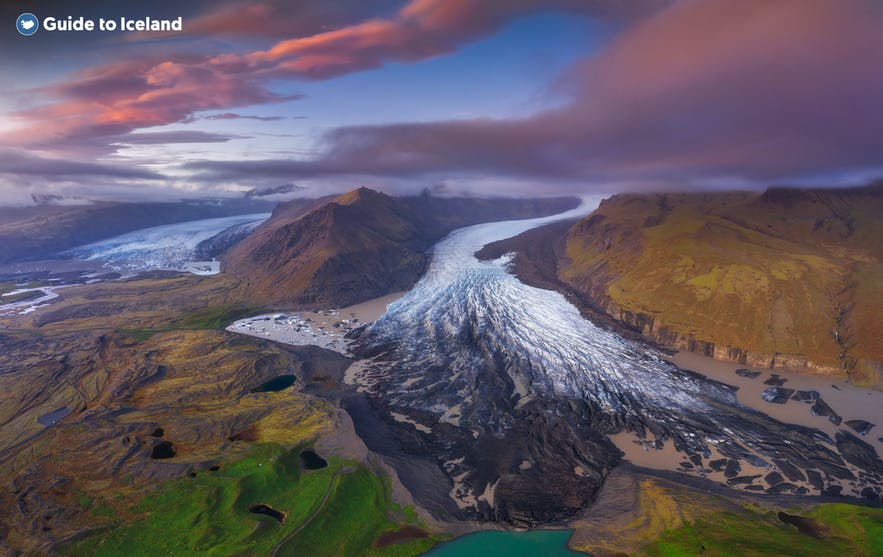Discover all you need to know about the 2021 Geldingadalur volcano eruption in Iceland! Here, you can find many beautiful photographs and fascinating facts about one of Iceland's most recently active volcanoes!
- Learn more: Guide to the 2024 and 2025 Sundhnukagigar Volcanic Eruptions
- See also: Complete Guide to the 2024 Hagafell Volcanic Eruption
- Check out the Guide to the 2023 Sundhnukagigar Eruption and the Guide to the 2023 Eruption of Litli-Hrutur Volcano
- Read about the 2022 Volcanic Eruption of Fagradalsfjall Volcano
In 2021, the Land of Ice and Fire lived up to its name when a volcano erupted on Reykjanes peninsula! For nearly a year, within the Geldingadalur valley, gleaming lava spurted and flowed from Fagradalsfjall volcano, and in July 2023, another eruption took place close to the mountain Litli-Hrutur. The fourth eruption then burst from the ground by the Sundhnukagigar crater row in December 2023, after over a month of dramatic seismic activity. It was closely followed by the Hagafell eruption on January 14th, 2024, and more eruptions in Sundhnukagigar throughout 2024 and 2025.
Why You Can Trust Our Content
Guide to Iceland is the most trusted travel platform in Iceland, helping millions of visitors each year. All our content is written and reviewed by local experts who are deeply familiar with Iceland. You can count on us for accurate, up-to-date, and trustworthy travel advice.
Making this phenomenon even more exciting was its location. The Reykjanes peninsula is familiar to all travelers to Iceland, as it connects Keflavik International Airport with the country's capital, Reykjavik. The region is also home to the Blue Lagoon. It was the most accessible eruption in Iceland since the country has become a significant tourist destination. After the recent eruptions on the peninsula, tours of Reykjanes are becoming more popular among visitors.
Of course, whenever such an event happens in Iceland, questions arise as quickly as the magma from the earth. Was the volcano in Iceland dangerous? Will regular eruptions continue? Could you visit Fagradalsfjall and watch the eruption with your own eyes? Answer all your questions here with this complete guide to the Fagradalsfjall eruption in Iceland!
- Check out these 10 Insane Photographs of the Fagradalsfjall Volcanic Eruption in Geldingadalur
- Explore Iceland's volcanic landscapes with these Volcano Tours
- Discover this Ultimate Guide to Volcanoes in Iceland
2021 Eruption of Fagradalsfjall Volcano
Starting on March 19th at around 9:30 PM, the much anticipated volcanic eruption at Gelingdalur on the Reykjanes Peninsula began. Initially, it was reported as a fissure up to half a mile long (700 meters), with a lava field covering around a square mile (a square kilometer) before it soon formed into an increasingly tall crater.
Although no one knew quite where or when a volcanic eruption would happen, it was inevitable that one would after 53,000 tremors had shaken Reykjavik and its surroundings in the weeks prior. There were no significant injuries despite one of these tremors reaching 5.7 on the Richter Scale and several others getting close.
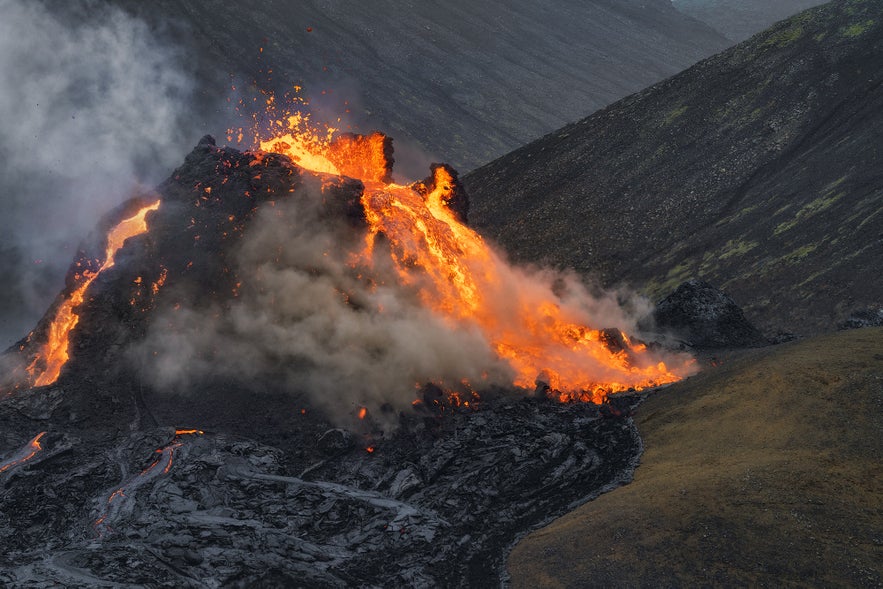
Thankfully, Fagradalsfjall went along the same course. Despite its primordial, terrifying presence, appearing more like Mordor than anywhere earthly, it posed little threat to life, infrastructure, or air travel for two notable reasons.
Firstly, it was an effusive eruption rather than an eruptive one. Lava did not burst from the earth in an explosion of ash, rock, and fire, as happened at Eyjafjallajokull in 2010. Instead, it emerged as an open fissure releasing much more gentle lava flows in the form of molten rivers.
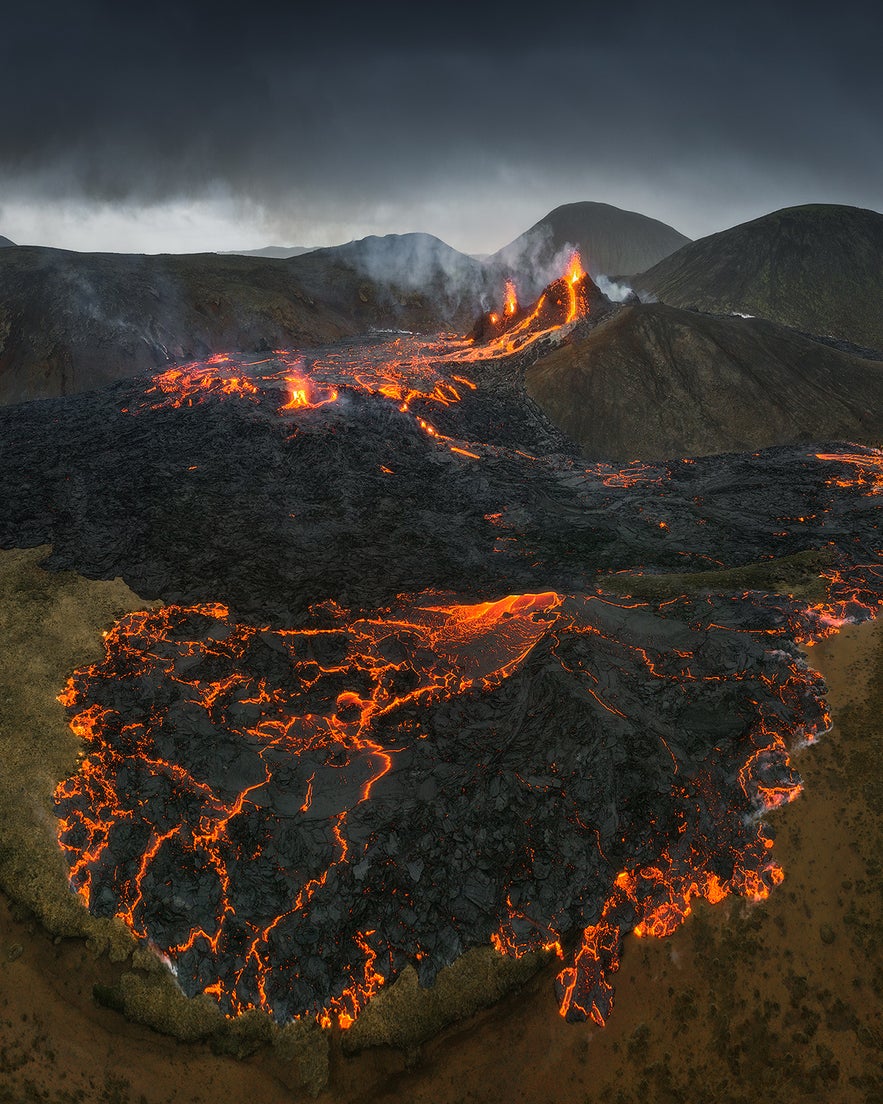
Secondly, the eruption occurred in a sheltered valley. Geldingadalur is mainly uninhabited and without significant infrastructure, making it one of the most convenient places it could have gone off in the region.
That is not to say, however, that it was predictable. Fagradalsfjall changed several times since it first opened, with new fissures and craters forming as the lava field developed. Furthermore, the fountains of fire significantly varied in their size, sometimes rising just a few meters in the air and sometimes shooting so high that they were visible from Reykjavik.
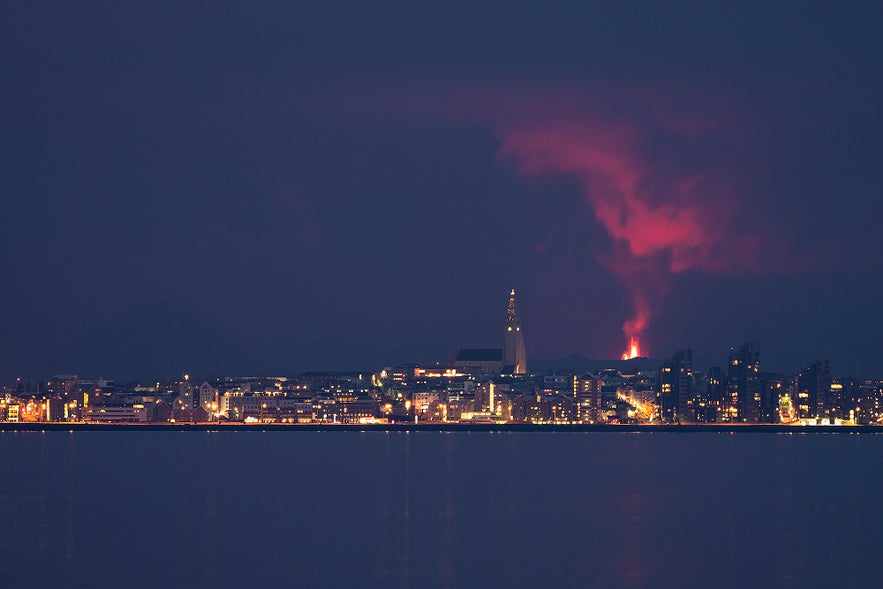
Those with respiratory conditions had to show caution if considering a visit, as the fumes coming from the volcano are by far their most dangerous quality. Even those living in the surrounding towns can exacerbate their symptoms if the winds blow from the eruption site's direction, carrying toxic gases such as sulfur dioxide, carbon dioxide, and hydrogen sulfide.
An interesting note about the Fagradalsfjall eruption - particularly to those fascinated by geology and volcanism - is the qualities of the lava that emerged from it. According to early data, this is the oldest lava that has occurred in Iceland for 7,000 years.
This can be attributed to the deep magma chamber beneath it, usually only found at the bottom of ocean rifts.
Visiting Fagradalsfjall Volcano
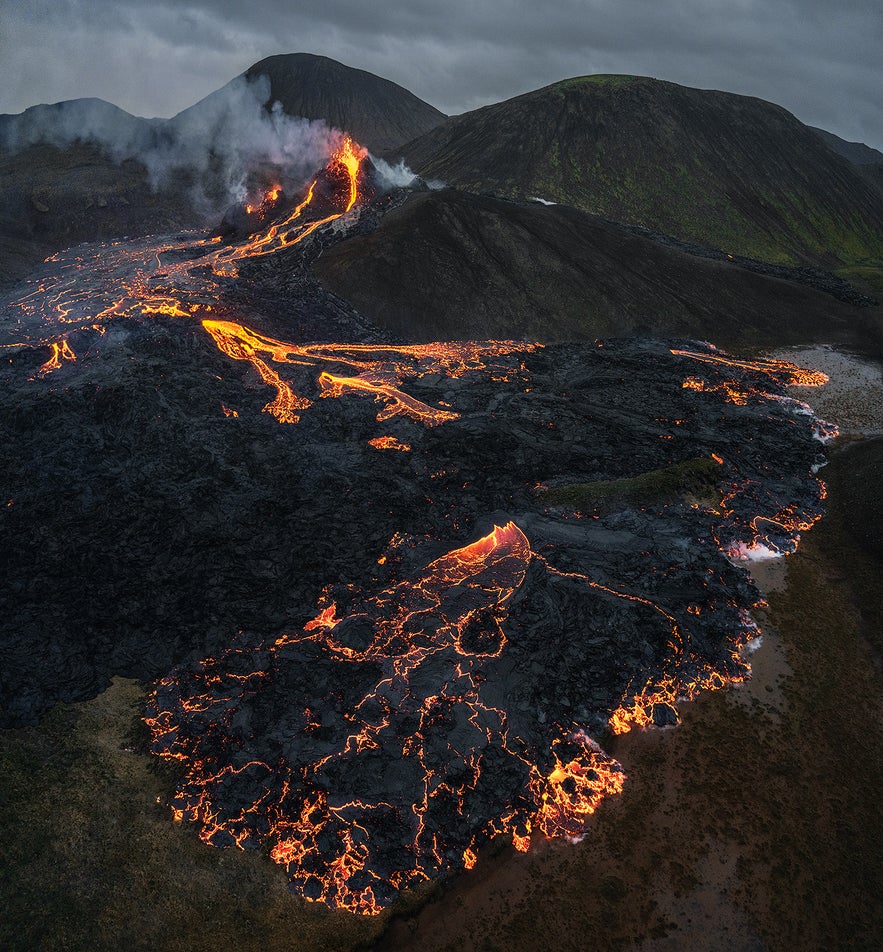
Fagradalsfjall has so far been a very visitor-friendly place to visit if travelers make sure to follow all safety precautions.
Over the past five years, a network of hiking trails has formed across the Reykjanes Peninsula. These routes connect eruption sites such as Fagradalsfjall, Litli-Hrutur, and Sundhnukagigar and reveal dramatic terrain shaped by recent volcanic activity.
Trail A is the most well-known route. It is a moderately challenging 4–5 mile (6–8 kilometer) hike to the original Fagradalsfjall eruption site in Geldingadalur. The path remains popular with visitors drawn to earlier lava flows and expansive views of the surrounding landscape.
In July 2025, a new trail called Trail B opened to the Sundhnukagigar crater row, currently the most volcanically active area in Iceland. This path starts from the P1 parking area near Mt. Fagradalsfjall and leads toward two designated viewpoints:
-
B1 Viewpoint – 2.9 miles (4.7 km) one way
-
B2 Viewpoint – 3.7 miles (6.1 km) one way
The trail is well-marked and monitored, offering direct views of fresh craters and active lava zones. Visitors must stay on the designated route, as nearby areas may be closed due to unstable ground or volcanic gas. For updated trail conditions, maps, and safety notices, check the Visit Reykjanes website.
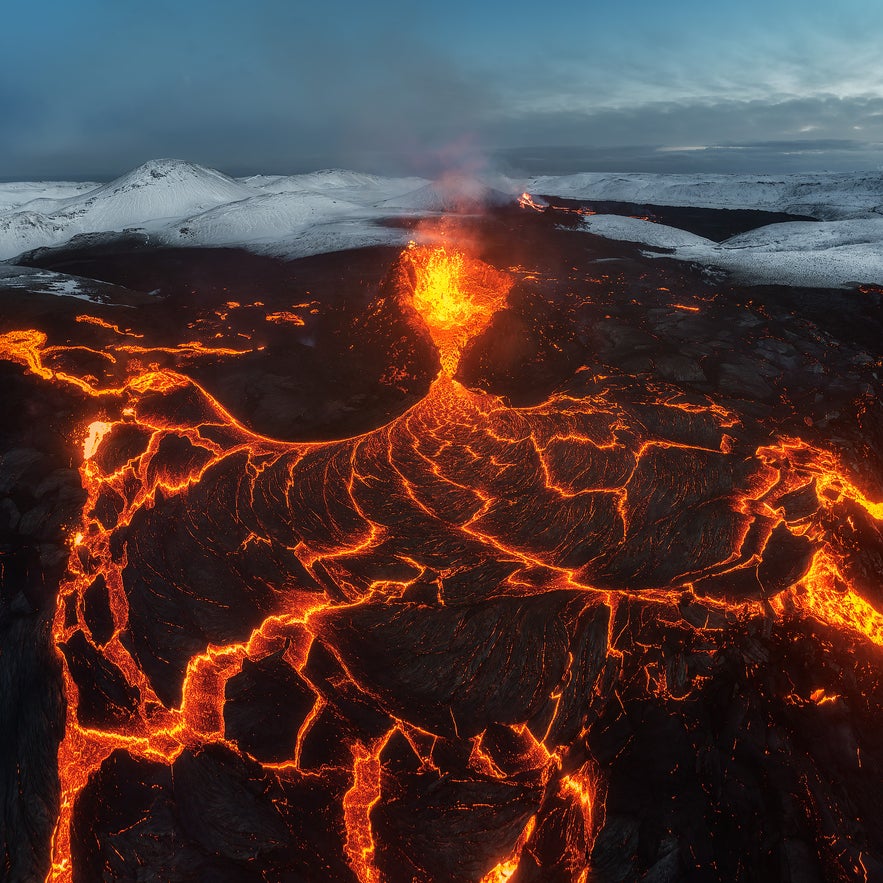
If you prefer a bird’s-eye view, this volcano helicopter tour provides an unforgettable flight over the active lava fields and craters.
Off-trail hiking remains prohibited due to safety risks. Check Loftgæði website for air quality updates and the SafeTravel website for hazard warnings and trail status before visiting.
Other nearby options include:
-
Path C – Langihryggur Ridge: A 2.4-mile (4 km) route to a scenic overlook of multiple eruption zones
-
Path E – Meradalir Route: A challenging 11–12.5 mile (18–20 km) hike for fit, experienced hikers
-
Natthagi Trails: Short, 1.2-mile (2 km) walks with lava field views
The trail to Litli-Hrutur, site of the 2023 eruption, also remains open. It spans about 12 miles (20 kilometers) round-trip and is best suited for experienced hikers.
-
See also: Dumbest Things to Do in Iceland
Photographing Fagradalsfjall Volcano
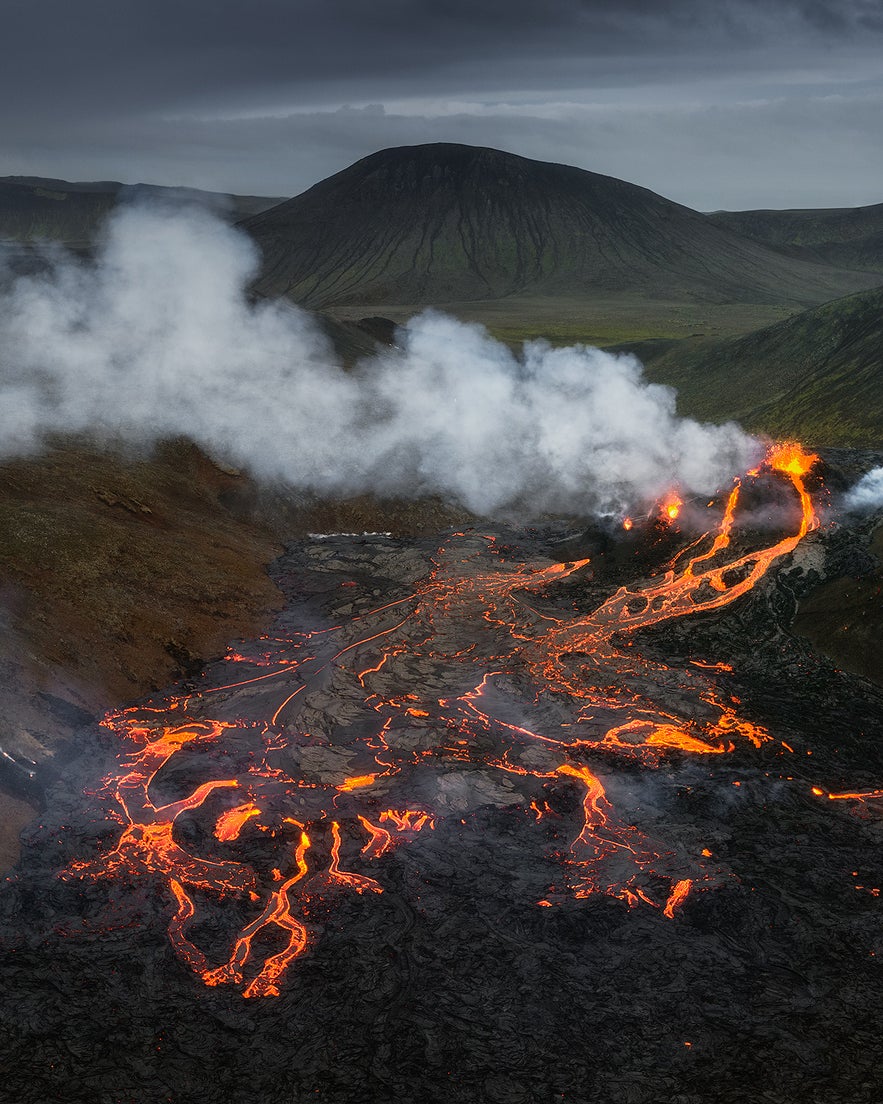
Visiting and marveling over the eruption at Fagradalsfjall was a breathtaking experience that many guests caught on camera. This phenomenon's videos and photographs inspire awe in anyone seeking them online and provide incredible mementos that lucky travelers can treasure for life.

When visiting, you'll be able to capture the field of new lava fields with a good camera or by flying over with a drone.
Before rushing to the site with all your technical equipment, know the rules of flying drones in Iceland. While we have an article on flying drones in Iceland where you can learn about this in-depth, the main restrictions for their use at Fagradalsfjall are below:
-
The drone must be marked with your name, address, and phone number
-
The drone cannot exceed 25 kilograms
-
Keep the drone below 250 meters
-
Do not fly over the crowds
-
Keep your drone away from other drones and far away from any crewed aircraft.
- See also: Photography in Iceland
How does Fagradalsfjall Volcano Compare to Other Icelandic Volcanoes?
Despite its epic beauty and awe-inspiring power, Fagradalsfjall was not just minor compared to Iceland's recent eruptions; it was practically minuscule.
Out of all the eruptions that have happened here since 2010, it most resembles Holuhraun. Both were effusive eruptions that opened in a lava landscape rather than beneath a glacier. Holuhraun produced the most extensive lava field that Iceland has seen since 1783, covering an area of over 9.1 square feet (85 square kilometers) and thus absolutely dwarfing this Fagradalsfjall eruption, which covered just 5.1 square miles (4.8 square kilometers).
Eyjafjallajokull and Grimsvotn, meanwhile, have very little in common with Fagradalsfjall. Both of these were enormous, explosive eruptions that occurred under ice caps, producing a different range of much more severe dangers. They released vast ash clouds that grounded flights, poisoned crops, and triggered evacuations in the surrounding areas due to the risk of glacial floods and pyroclastic flows.
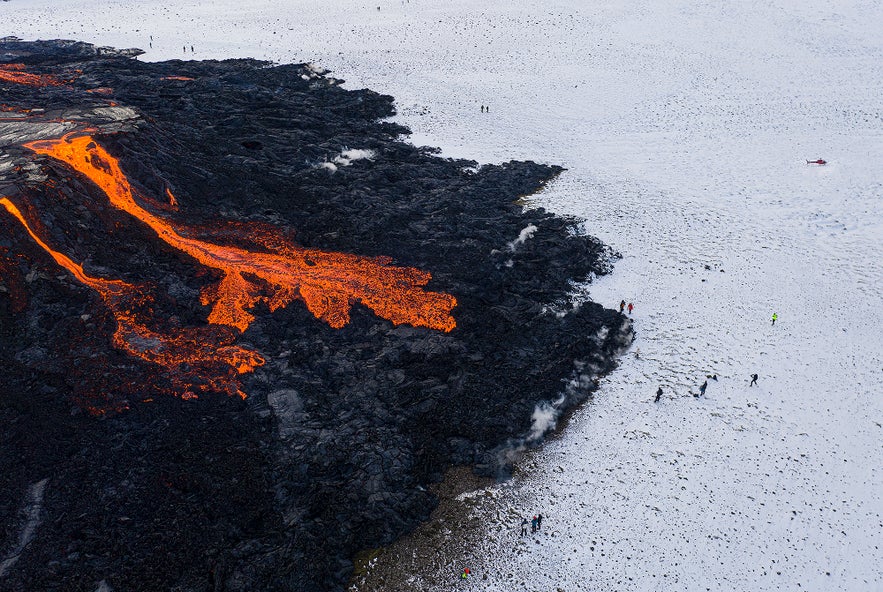
Although the above eruptions were more extraordinary volcanic events than Fagradalsfjall, they lacked easy accessibility. Holuhraun and Grimsvotn are both in the central Highlands, and while Eyjafjallajokull's South Coast location isn't hard to reach, its ash cloud stopped many prospective admirers from getting to it!
Fagradalsfjall's eruption site, meanwhile, was less than an hour's drive from Reykjavik, less than half an hour from Keflavik International Airport, and around fifteen minutes from the Blue Lagoon.
- See also: Documentaries About Icelandic Volcanoes
Formation of Fagradalsfjall Volcano
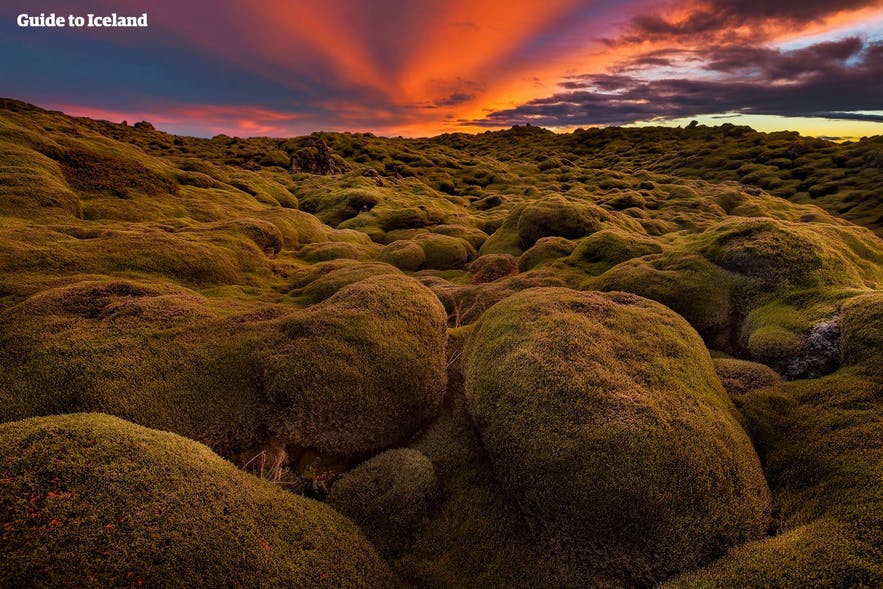
The Fagradalsfjall volcano is a relatively "young" part of Iceland; all of the Reykjanes peninsula is. This means that it was only formed by magma rising from the core of the Earth recently - that is to say, over the past seven million years. The oldest parts of Iceland in the Westfjords are 16 million years old by comparison, and the oldest exposed land on earth in Australia dates back an incomprehensible four billion years.
This can be explained by the fact that Iceland was formed by a weakness in the Mid-Atlantic Rift, the separating divide between the North American and Eurasian tectonic plates. As these plates pull apart, magma rises to the surface and creates new land.
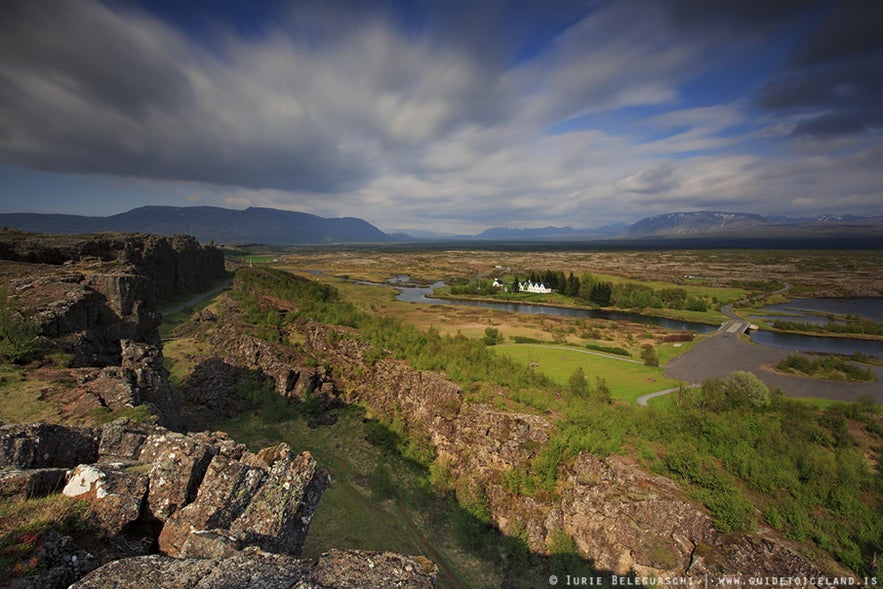
The closer to the Mid-Atlantic Rift, the newer the land, and this valley runs right along the length of the narrow Reykjanes Peninsula. The region is home to the Bridge Between the Continents, where you can walk from one plate to the other.
As such, Reykjanes is incredibly volcanic, and this activity is written all over its landscapes. Very little vegetation can grow on the endless plains of lava; geothermal areas seethe and bubble in many different spots, and cone-shaped volcanoes dominate the horizon. Eruptions occur very regularly - although, again, we are speaking in geological terms, as the last was 800 years ago.
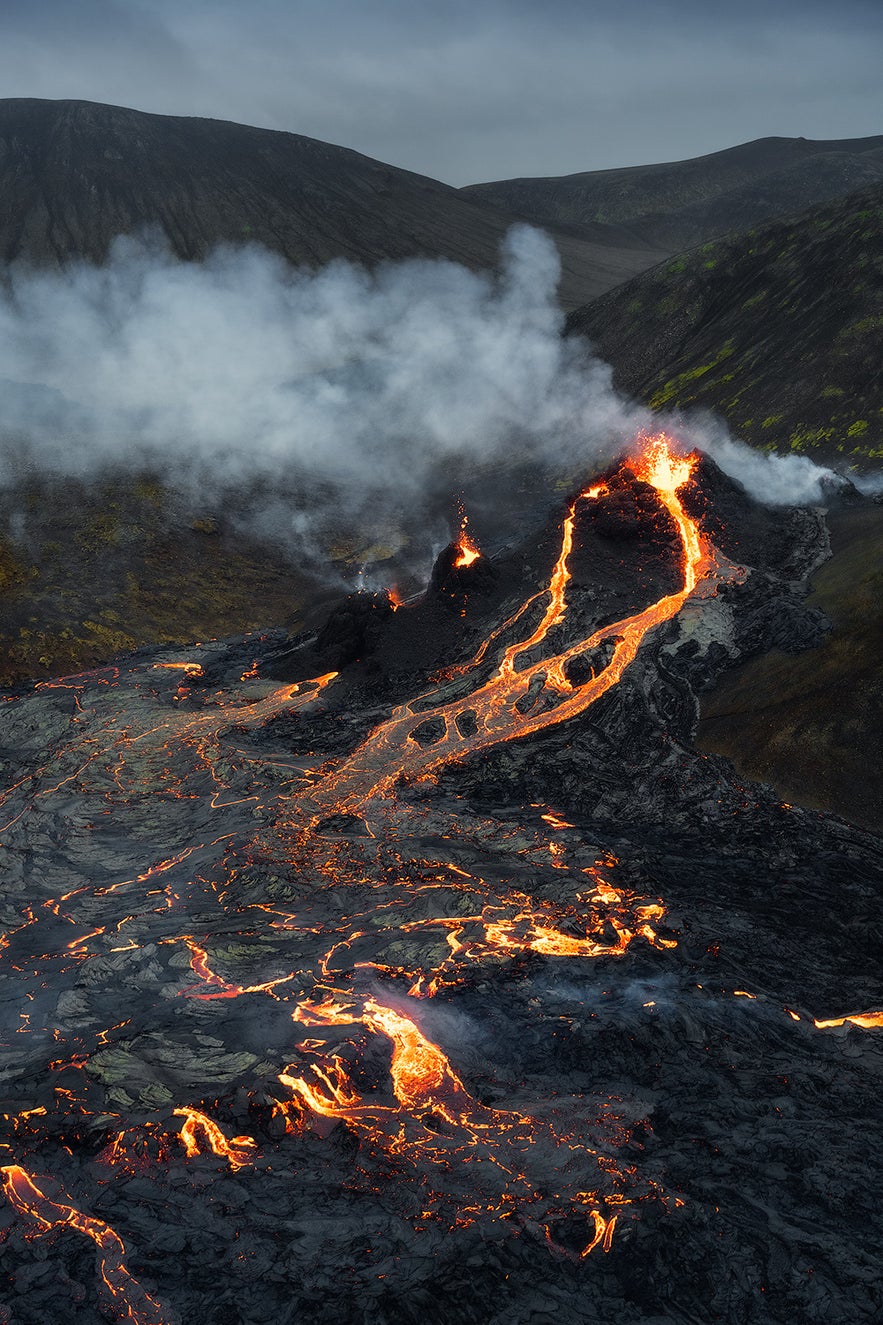
Geldingadalur had not erupted for 800 years before 2021, although there had long been a magma chamber here. Many of Iceland's volcanoes exist this way, lying dormant until an unexpected fire and fumes are released.
The eruptions that have formed the Reykjanes peninsula landscapes have defined the region's way of life for centuries. It became a center of the country's fishing industry for early Icelanders as settlers could not grow food or feed livestock on the lifeless terrain.
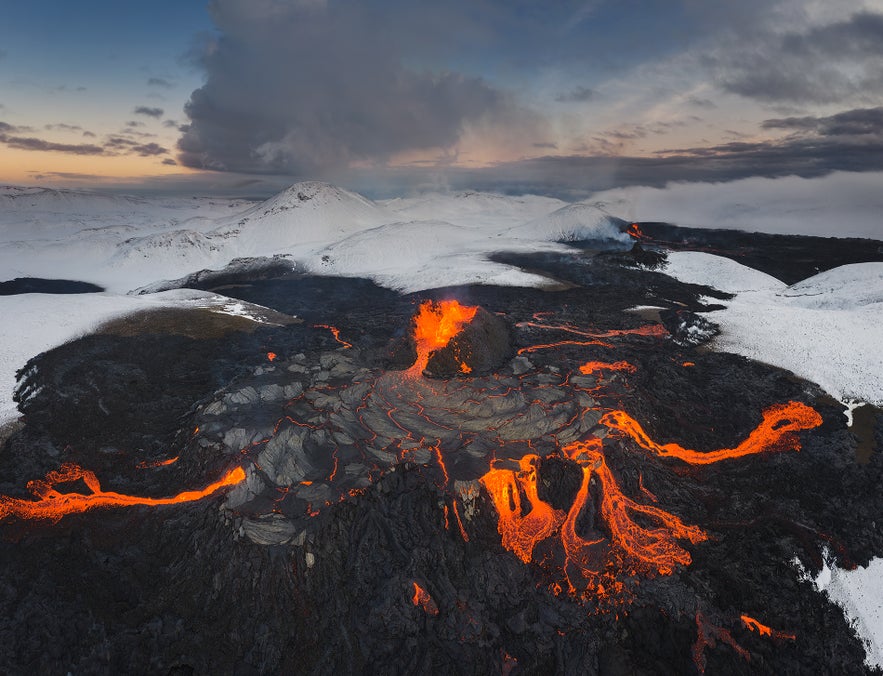
More recently, the volcanism of Reykjanes has led to a significant number of attractions for tourists to the area.
For example, you can embark on adventures into lava tunnels, quad bikes across black sand beaches, and enjoy relaxing, guided sightseeing tours!
Fagradalsfjall Volcano Since Settlement
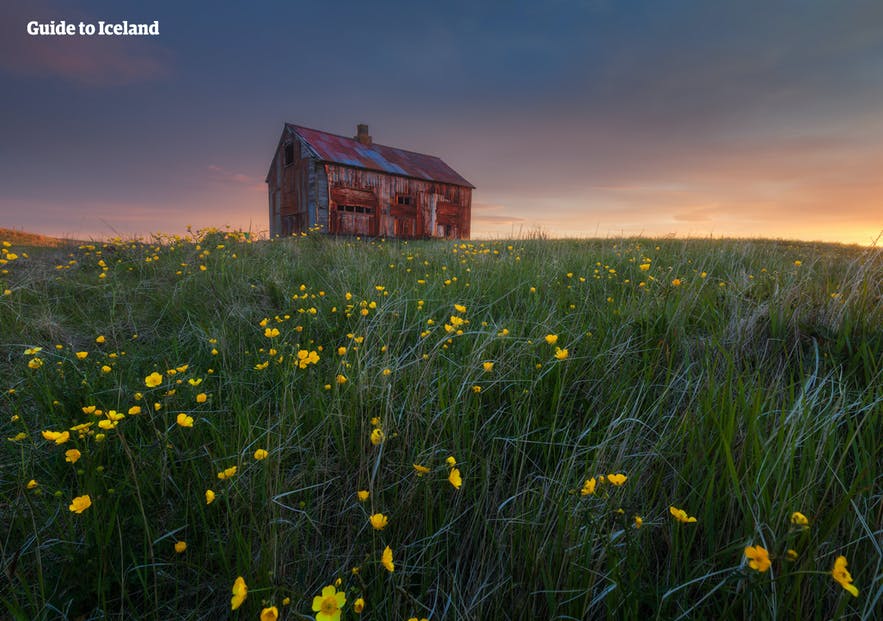
Fagradalsfjall has mainly remained uninhabited since settlement; the nearest town is Grindavik, about seven kilometers away. This is because of steep-sloped valleys, which essentially prevent the area from being easily accessible. Furthermore, its inland location was useless to the fishing communities who relied on the seas to survive.
Little-explored places such as Geldingadalur, however, had an enormous impact on the history and culture of the Reykjanes Peninsula. The region's folklore of elves, ghosts, and witches is heavily inspired by the misty, desolate, and dangerous landscapes that the volcanoes have created.
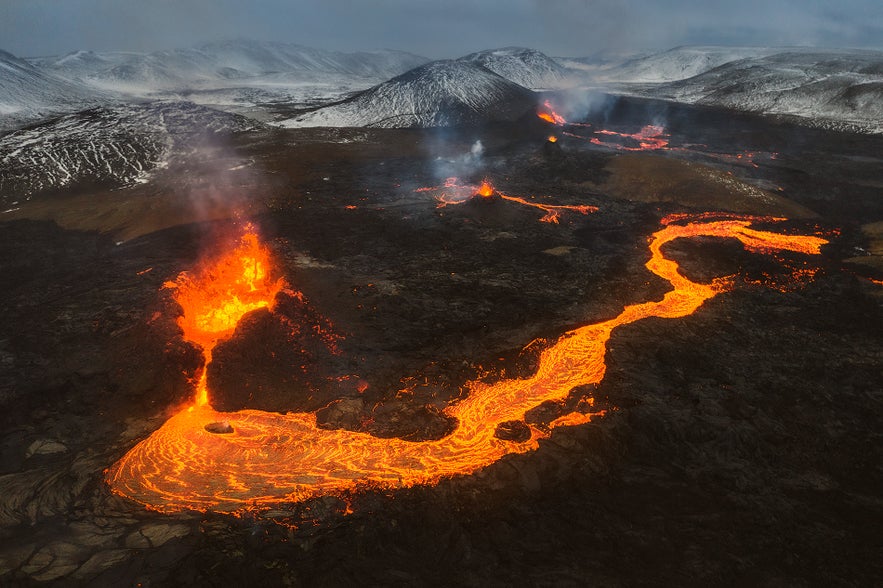
Places such as the ruins of Selatangar, the hot springs of Gunnuhver, and the troll pool of Brimketill are all steeped in fascinating fables.
Aside from its recent eruption, Fagradalsfjall has its own story in Iceland's history, although the tale is true and tragic. In 1943, during the Allied occupation of the country during World War Two, the famous bomber plane 'Hot Stuff' was caught in bad weather during a mid-Atlantic fuelling stop and crashed into the mountainside.
- See also: Folklore in Iceland
Fourteen of the fifteen passengers on board died, including Frank Maxwell Andrews, the US Army Air Forces founder and a decorated Lieutenant General.
Andrews has plenty of monuments to his name across the world for his work in both World Wars, and there is one dedicated to him and the plane's other victims in Iceland. It was originally erected in 2018 by Fagradalsfjall, but in 2023, it was moved because of risk from the volcanic eruptions. It's now located at the intersection of the roads Reykjanesbraut and Grindavikurvegur.
- See also: The History of Iceland
Future of the Fagradalsfjall Volcano
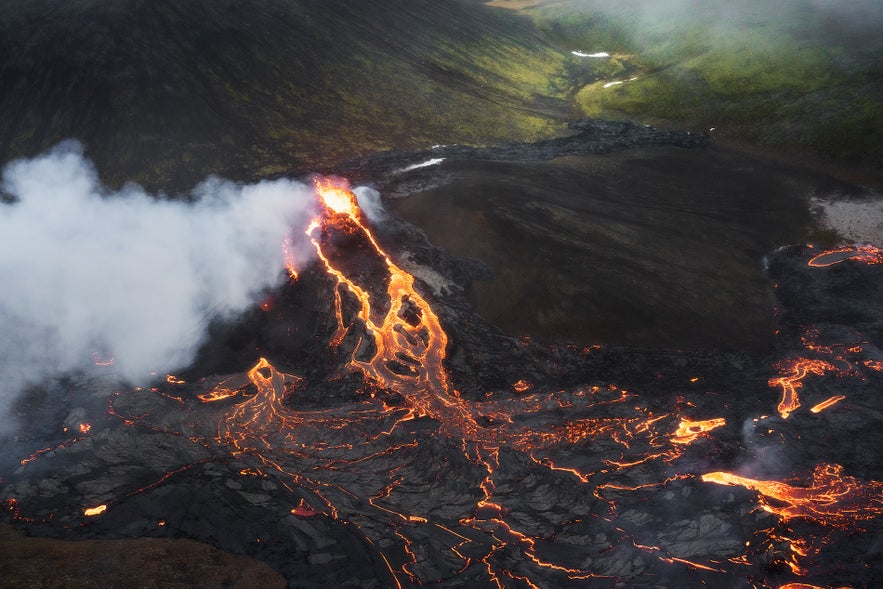
Due to the first and second eruptions' unfortunate overlap with the Covid-19 pandemic, many were unable to make the journey to witness the eruption. The 2023 eruption near Litli-Hrutur was as accessible and visitor-friendly as its predecessors, with many people taking the opportunity to see the eruption up close during the month that it lasted.
Since then, recurring eruptions from the Sundhnukagigar crater row have continued to reshape the Reykjanes Peninsula. While early phases of the eruption zone were closed to the public, access has gradually improved. In July 2025, a marked hiking trail opened, allowing visitors to reach a safe viewing point near the active crater.
The Fagradalsfjall region has become one of Iceland’s most active volcanic zones, with twelve eruptions since 2021. Activity is concentrated around the Sundhnukagigar crater row, where scientists continue to monitor seismic and volcanic developments closely.
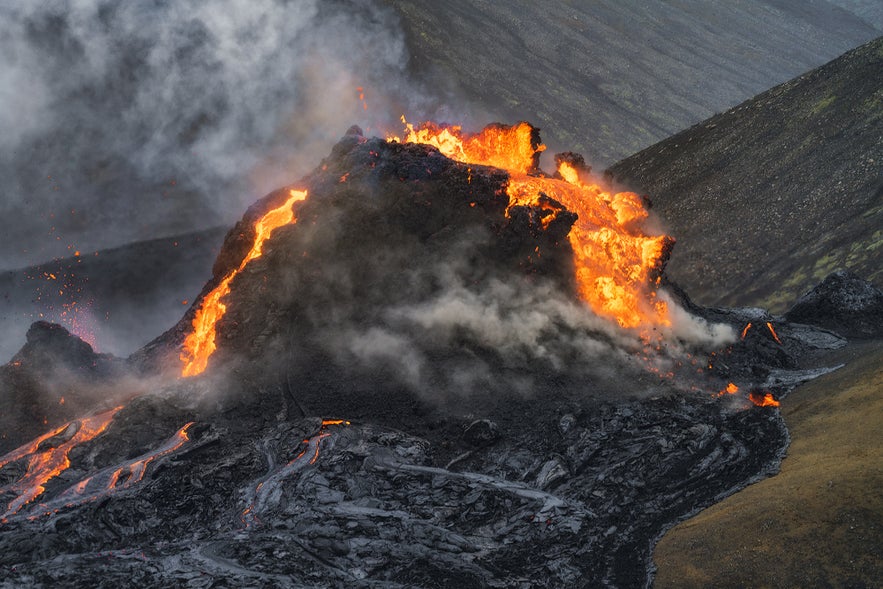
If seeing an erupting volcano is on your bucket list, it's always good to keep an eye on Iceland. The gap between this eruption and the country's last, at Holuhraun in 2014, was notably long, with new volcanic events usually occurring every few years. Grimsvotn's eruption, for example, was just three years before Holuhraun, and Eyjafjallajokull just a year before that.
Katla, Bardabunga, and Grimsvotn are all considered overdue and under constant surveillance.
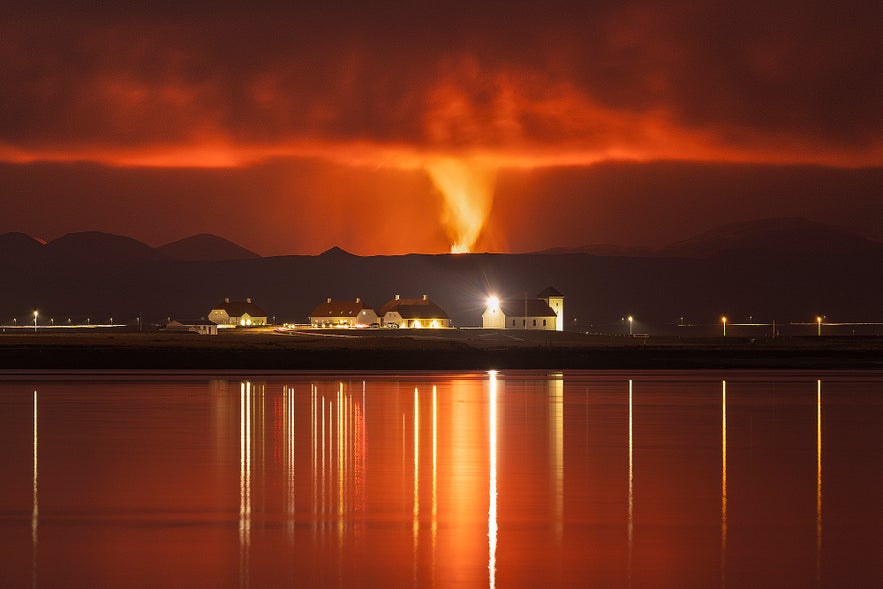
Do you have any more questions about the eruption at Geldingadalir? Did you go see the volcano for yourself? Let us know in the comments below!


